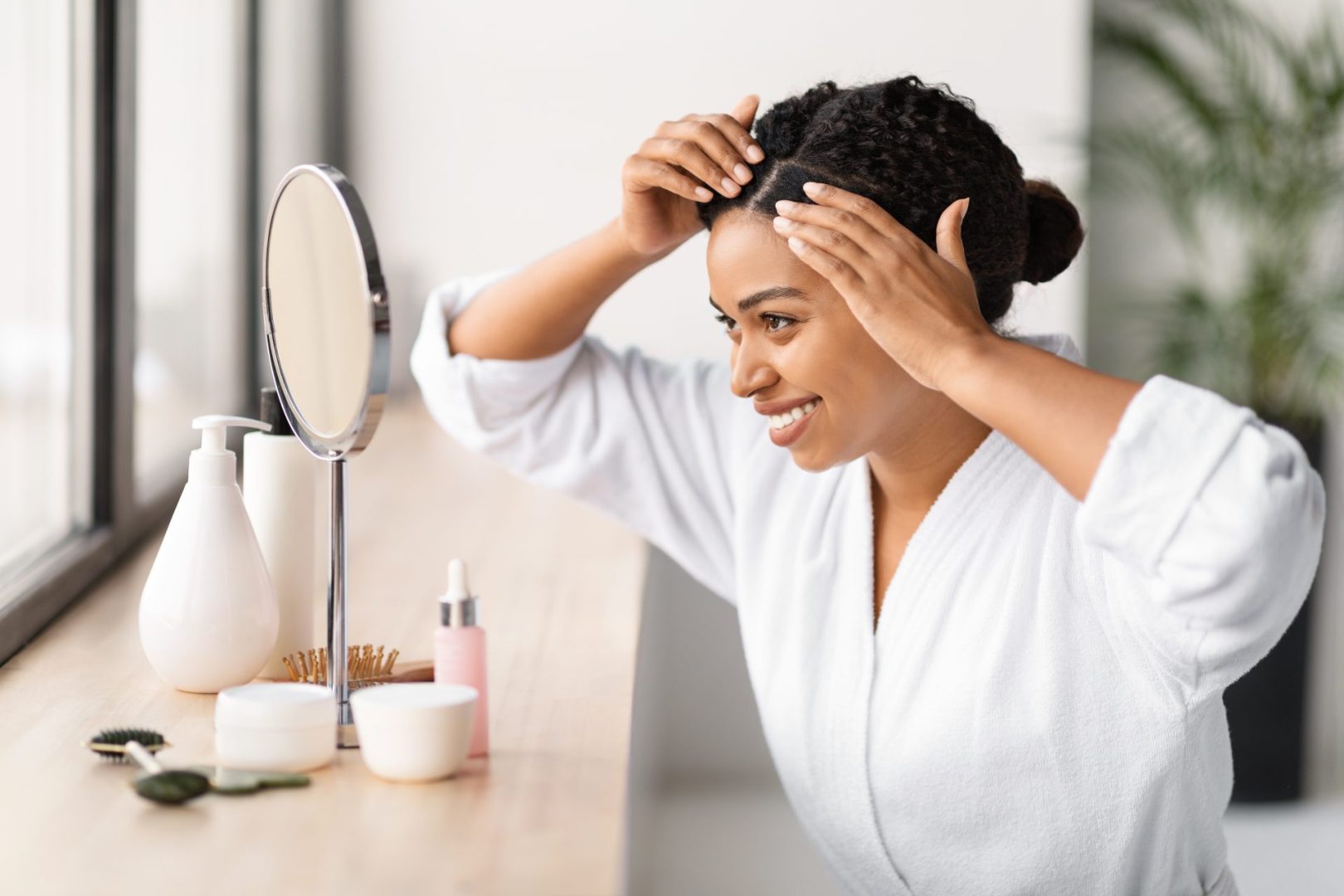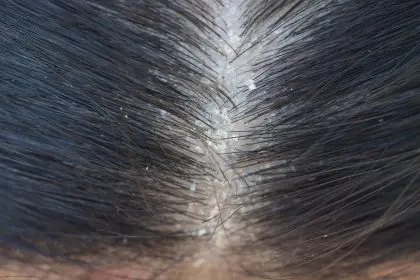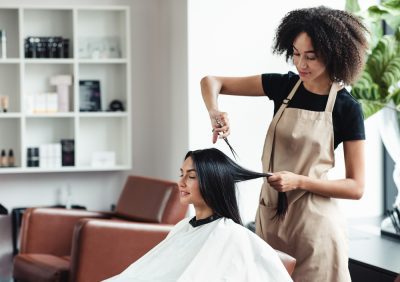Those embarrassing white flakes on your shoulders can make even the most confident person feel self-conscious. Dandruff affects nearly half of all adults at some point in their lives, creating an itchy, flaky scalp that seems impossible to control. The good news is that this common condition responds well to targeted treatments when you understand what causes it and how to address the root problem.
Dandruff occurs when the scalp sheds dead skin cells too quickly, creating visible flakes that fall onto clothing and cause persistent itching. Multiple factors contribute to this accelerated cell turnover, including fungal overgrowth, oil production imbalances, skin sensitivity, and even stress levels.
Understanding these underlying causes helps explain why some treatments work better than others and why consistency matters more than quick fixes. The most effective approach combines immediate relief strategies with long-term scalp health maintenance.
1. Switch to medicated shampoos with active ingredients
The foundation of dandruff treatment lies in choosing shampoos formulated with specific active ingredients that target the condition’s root causes. Regular shampoos simply clean the hair and scalp without addressing the fungal overgrowth and excessive cell turnover that create dandruff.
Zinc pyrithione represents one of the most effective anti-dandruff ingredients, working as both an antifungal and antibacterial agent. This compound slows down the rapid cell turnover on your scalp while controlling the Malassezia fungus that contributes to flake formation.
Ketoconazole offers another powerful option, particularly for stubborn dandruff cases. This antifungal ingredient penetrates the scalp more deeply than zinc pyrithione, making it especially effective for people with seborrheic dermatitis or severe flaking.
Selenium sulfide works by reducing both fungal growth and the rate of skin cell production on the scalp. While highly effective, this ingredient can cause hair discoloration in some people, particularly those with chemically treated or light-colored hair.
Coal tar slows skin cell growth and reduces inflammation, making it useful for people with both dandruff and scalp psoriasis. However, this ingredient can make your scalp more sensitive to sunlight and may stain light-colored hair.
2. Master the proper shampooing technique
How you wash your hair matters just as much as what you use. Many people make the mistake of rushing through their shampooing routine, which prevents medicated ingredients from working effectively and can actually worsen scalp irritation.
Start by thoroughly wetting your hair with warm water to open the hair cuticles and prepare the scalp for cleansing. Apply the medicated shampoo directly to your scalp rather than your hair length, focusing on areas where you notice the most flaking.
Gently massage the shampoo into your scalp using your fingertips, not your nails. This massage action helps remove loose flakes and dead skin while stimulating blood circulation to promote scalp health. Avoid scrubbing aggressively, as this can irritate the scalp and worsen dandruff.
Allow the medicated shampoo to sit on your scalp for the recommended time, usually three to five minutes. This contact time allows the active ingredients to penetrate the scalp and work against the fungal overgrowth and rapid cell turnover causing your dandruff.
Rinse thoroughly with cool water to remove all shampoo residue and help seal the hair cuticles. Leftover product can build up on the scalp and actually contribute to flaking and irritation.
3. Incorporate natural antifungal treatments
Tea tree oil stands out as one of the most researched natural treatments for dandruff. This essential oil possesses powerful antifungal properties that can help control the Malassezia fungus while reducing scalp inflammation and itching.
Mix a few drops of tea tree oil with a carrier oil like coconut oil or jojoba oil before applying to your scalp. Never use undiluted tea tree oil, as it can cause severe irritation and burning. Massage the mixture into your scalp and leave it on for 10-15 minutes before shampooing as usual.
Apple cider vinegar creates an acidic environment on the scalp that discourages fungal growth while helping to remove buildup and restore the scalp’s natural pH balance. Mix equal parts apple cider vinegar and water, apply to damp hair, and let sit for 15 minutes before rinsing.
Coconut oil contains natural antifungal compounds that can help reduce dandruff while moisturizing the scalp. Warm a small amount of virgin coconut oil and massage it into your scalp before bed. Cover with a shower cap and rinse out in the morning with your regular shampoo.
4. Address dietary and lifestyle factors
What you eat and how you live can significantly impact your scalp health and dandruff severity. Certain nutrients play crucial roles in maintaining healthy skin cell turnover and controlling inflammation that contributes to flaking.
Zinc deficiency has been linked to increased dandruff severity, as this mineral helps regulate skin cell production and supports immune function. Foods rich in zinc include oysters, beef, pumpkin seeds, and chickpeas. Consider incorporating these into your regular diet.
Omega-3 fatty acids help reduce inflammation throughout the body, including the scalp. These healthy fats can help calm irritated skin and may reduce the severity of dandruff symptoms. Fatty fish, walnuts, and flaxseeds provide excellent sources of omega-3s.
B vitamins, particularly biotin and niacin, support healthy skin cell production and may help reduce dandruff when consumed regularly. Eggs, leafy greens, and whole grains provide good sources of these important nutrients.
Stress management plays a surprising role in dandruff control. High stress levels can weaken your immune system and worsen inflammatory skin conditions, including dandruff. Regular exercise, adequate sleep, and stress-reduction techniques can help improve your scalp health from the inside out.
5. Control oil production and buildup
Excessive oil production on the scalp creates an ideal environment for the fungi that contribute to dandruff. Learning to manage your scalp’s oil levels without over-drying can help reduce flaking and itching.
Avoid over-washing your hair, which can strip natural oils and cause your scalp to produce even more oil in response. Most people with dandruff benefit from washing every other day rather than daily, though this varies based on individual oil production and hair type.
Clay masks designed for the scalp can help absorb excess oil and remove buildup without harsh chemicals. Bentonite clay mixed with water creates a gentle treatment that draws out impurities while providing minerals that support scalp health.
Regular brushing with a natural bristle brush helps distribute scalp oils down the hair shaft and removes loose flakes before they become visible on your clothing. Brush gently to avoid irritating the scalp, and clean your brush regularly to prevent reintroducing bacteria and fungi.
6. Choose the right hair products
Many styling products contain ingredients that can worsen dandruff by clogging pores, creating buildup, or irritating sensitive scalps. Reviewing your entire hair care routine helps identify potential contributors to your flaking.
Avoid products containing sulfates, which can strip the scalp of natural oils and cause irritation that worsens dandruff. Look for gentle, sulfate-free formulas that cleanse without over-drying.
Heavy styling products like gels, pomades, and hairsprays can create buildup on the scalp that feeds the fungi responsible for dandruff. Choose lighter formulations and avoid applying products directly to your scalp.
Alcohol-based products can dry out your scalp and trigger increased oil production, creating a cycle that worsens dandruff. Read ingredient labels and choose alcohol-free alternatives when possible.
7. Maintain consistent treatment schedules
Dandruff treatment requires patience and consistency to see lasting results. Many people give up too soon or switch treatments too frequently, preventing any single approach from working effectively.
Use medicated shampoos at least twice per week initially, even if your dandruff seems to improve quickly. Reducing frequency too soon often leads to flare-ups that require starting the treatment process over again.
Rotate between different active ingredients if you find that one stops working as effectively over time. Some fungi can develop resistance to specific treatments, making rotation a useful long-term strategy.
Keep a simple diary tracking your dandruff severity, products used, and any lifestyle factors that might influence your symptoms. This information helps identify patterns and determine which treatments work best for your specific situation.
8. Know when professional help is needed
While most dandruff responds well to over-the-counter treatments and home remedies, some cases require professional medical attention to address underlying conditions or prescription-strength medications.
Severe itching that interferes with sleep or daily activities may indicate a more serious scalp condition requiring medical evaluation. Persistent scratching can lead to secondary infections that complicate treatment.
If your dandruff doesn’t improve after six to eight weeks of consistent treatment, consider consulting a dermatologist. You may have seborrheic dermatitis, scalp psoriasis, or another condition that requires prescription medications.
Red, inflamed patches on your scalp, especially if accompanied by hair loss, warrant professional evaluation. These symptoms can indicate conditions that won’t respond to typical dandruff treatments and may require specialized care.
Building long-term scalp health
Successfully managing dandruff involves more than just treating active symptoms. Building long-term scalp health prevents future flare-ups and reduces your reliance on medicated treatments.
Gentle, consistent care works better than aggressive treatments that can irritate your scalp and worsen dandruff. Focus on maintaining your scalp’s natural balance rather than trying to eliminate all oil production.
Pay attention to seasonal changes that might affect your dandruff. Many people notice worsening symptoms during winter months when indoor heating dries the air, or during stressful periods when immune function may be compromised.
Remember that managing dandruff is an ongoing process rather than a one-time fix. With the right combination of treatments and lifestyle adjustments, you can achieve a healthy, flake-free scalp that allows you to feel confident in any situation.


















